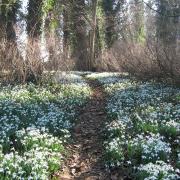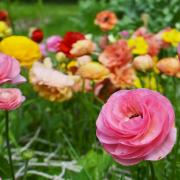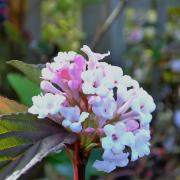Taverham Nursery Centre’s expert plantsman Keith Clouting’s autumn advice

Rudbeckia hirta are becoming increasingly popular for their bright daisy-like flowers which add a welcome splash of colour to the late summer and autumn garden. Most are treated as annuals or biennials although some of the newer hybrids are proving more perennial.
Despite being generally short-lived they are well worth the effort for the colour they add at this time of year. A stunning large-flowered variety is Rudbeckia hirta ‘Indian Summer’ its golden yellow petals surrounding a chocolate brown centre disc really stand out, another strong well branched variety is R.h. ‘Cappuccino’ which has striking flowers up to 10cm across with golden tips to the petals with orange and mahogany centres, as with ‘Indian Summer’ these are produced over a long period from July to the last frosts.
A range of more recent hybrids are the ‘Summerina’ series where the annual Rudbeckia have been crossed with Echinacea to improve hardiness, the results are several fabulous cultivars including R.Summerina ‘Pumpernickle’ which has velvety orange-brown flowers which deepen in colour as the weather cools in the autumn and for something a little different R. Summerina ‘Electric Shock’ which has quill type yellow and brown bi-coloured flowers.
Rudbeckia hirta are best grown in good to well-drained soil in full sun they also grow well in containers and make excellent cut flowers

Plant of the month
Lespedeza thunbergii
Originating from China and Japan this jewel of the late summer and autumn and summer garden forms a mound of arching stems which, at this time of year, are covered with masses of purple-pink pea like flowers. Because of its arching habit it is excellent for growing on banks and hanging over walls. This deciduous shrub should be cut back in late winter and, although new growth doesn’t really get going until May, it will put on 2m of growth by late summer, Lespedeza grows well in a sunny position in good or well-drained soil and is drought tolerant when established.

Question.
I have grown some lovely cannas this year and would like to keep them; how do I look after them over winter?
In mild areas or sheltered gardens it’s possible to cover them with a thick mulch to protect them through the winter, although plants may still be lost in extreme cold or wet winters. I prefer to lift the rhizomes cutting back the stems to a few centimetres then store them in crates or pots in just damp compost in a cool but frost free place, if it’s too warm the plants will start to grow which is undesirable in winter. In spring repot into a suitable sized container watering sparingly to start increasing as the roots develop then plant out or move pots outside as the risk of frost passes.

Catch up with Keith
October is the ideal time for planting while there is still some warmth in the soil to help plants establish before winter.
Pot up some Lily of the valley roots to force on for some fragrant winter flowers.
Mulch the crowns of any less hardy perennials to help them through the winter.
There is still time to save some seed from your favourite plants for sowing next year, harvest on a dry day the store in a cool dry place until you’re ready to sow.
Keep an eye on the weather and bring inside any tender plants if frost is forecast.




























